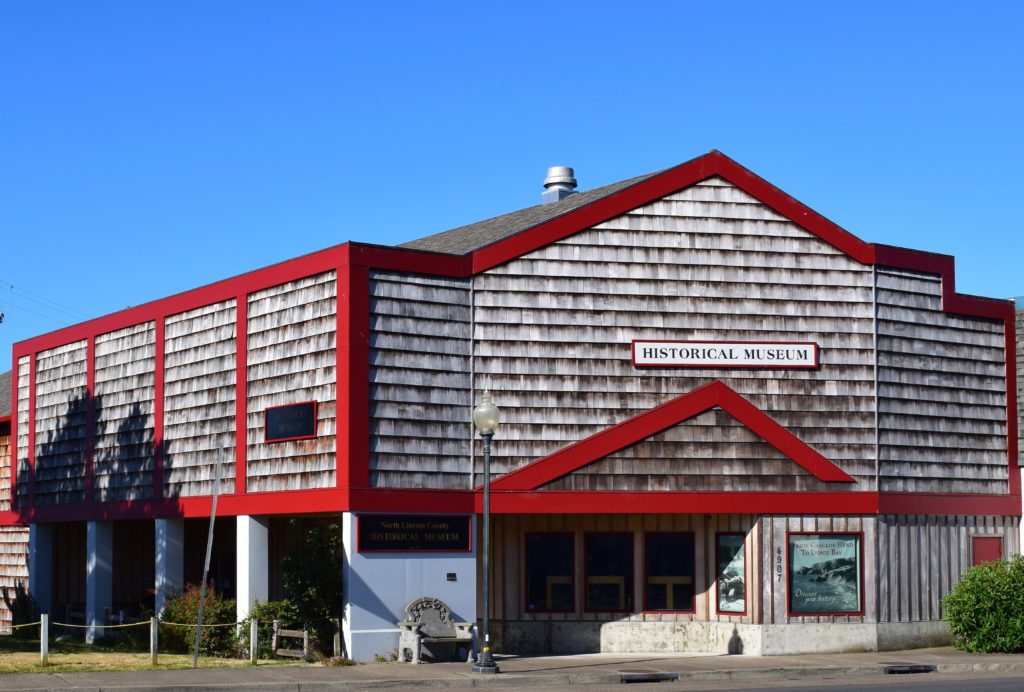
By LORI TOBIAS/Oregon ArtsWatch
Staff at the North Lincoln County Historical Museum hear it all the time: “We didn’t even know this was here,” or “I drive by it all the time, but I never stopped in.”
But once they pass through the front door, first-time visitors generally have the same reaction – surprise.
Which is no surprise. Because there is little about the two-story building on U.S. Highway 101 two blocks north of Siletz Bay to suggest it holds what is arguably the largest glass fishing float collection in the Pacific Northwest, the only Pixieland and Pixie Kitchen exhibit on public display, and a nod to local history that redheads may love or hate, but most certainly won’t find elsewhere.
So how did this little building bordered by a grocery store on one side and glass shop on the other land a collection unlike any anywhere in the Pacific Northwest? For that, credit goes to a small and spirited bunch of coastal dwellers who knew better than anyone the bounty of their waterfront backyard.
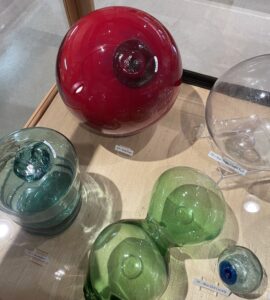
The 37-year-old museum estimates it owns about 25,000 prized pieces of Lincoln City memorabilia – not bad for a nonprofit that relies on donations for its collections and charges nothing for admission.
Museum director Chris Melton recalls discovering the museum after moving here from Los Angeles during the pandemic.
“The biggest thing that blew my mind was the storage room and this vast quantity of artifacts people have donated since the ‘80s,” he said, “everything from doll dresses to plows, Lincoln busts, paintings by local artists, hundreds of home movies.”
From the beginning, the founders – who met over spaghetti dinners to talk about the possibilities for a museum – were determined the collection would specifically reflect Lincoln City, said Anne Hall, who started as a volunteer in 1999 and was director through 2018. “We were so removed from Newport. The history was just different.”
Toledo had the railroad, Newport developed around the bayfront. Without rail or a harbor, Hall said, north Lincoln County remained undeveloped by white settlers until the mid-1920s “and that’s what the founders were interested in preserving.”
Once the group began collecting artifacts, they stored them in a member’s home, but after a fire destroyed nearly everything, they had to start all over again. In 1987, they moved into their first building, staffed solely by volunteers.
In 1994, the museum moved into the former City Hall building. But in less than a decade, the museum had outgrown the facility. A 2003 expansion doubled the size to about 4,000 square feet.
Today, exhibits include those on the fishing and logging industries, homesteading, Native Americans, fishing floats, birds of the Pacific Northwest, dolls, and World War II. Additionally, a library contains books, phone books, yearbooks, and other items available to visitors by appointment. The collection also includes VHS and audio cassettes of more than 200 oral history interviews going back to about 1910.
Tourism focus
One of the largest collections is focused on tourism — the stretch of Highway 101 was so popular by the 1950s that it was dubbed The Twenty Miracle Miles. At the time, what is known now as Lincoln City was actually five small towns: Cutler City, Taft, Oceanlake, Nelscott, and Delake. They merged to form Lincoln City in 1964.
“What really surprises people is the second floor,” Melton said. “People go up there and are just sort of awed. There is a huge history of Lincoln County tourism … the history of road tripping, car camping. It was so muddy, the cars and carriages would sink deep into the mud. So, they would build roads out of logs.”
Along with the brick-and-mortar exhibits, there are virtual exhibits, including Every Artifact Has a Story!
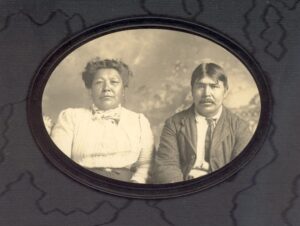
Created by former director and current collections specialist Jeff Syrop to make the museum available to visitors during the pandemic, the virtual artifact exhibit focuses “on artifacts based on the stories that they possess, rather than their aesthetic value alone.” One of those is a basket crafted by Sophia “Sissy’ Johnson. Syrop describes it as “probably the coolest artifact in our collection.”
Born in 1859, Johnson was the daughter of “Onatta, the great chief of the Tututni Tribe. Her tribe was one of the largest to be forced to the Coast Reservation the same year she was born,” according to museum information.
“Sissy Johnson was a Native American allotment holder,” Syrop said. “She and her husband, Jakie, lived in a little cabin in the area that would become Taft before anyone was there.” As white settlers arrived, Syrop added, the Johnsons “were the ones who taught them to survive, how to hunt for clams, how to cross the Siletz River. She delivered people’s babies.”
On the other end of the historical spectrum is an exhibit not likely to be seen again or anywhere else. That’s the Red Devils display featuring “The Unique Titian Festival.” Held in Taft in the 1930s, the event was billed as “The World’s Only Redhead Celebration.” The Red Devils were Lincoln City boosters who promoted the city with various festivities. According to the exhibit, “During the Redhead Roundup, they would kidnap redheads, hold mock weddings, and even throw people into the ocean.”
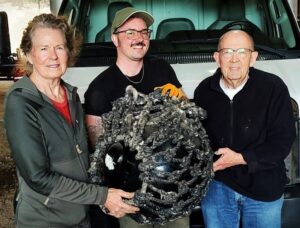
The museum’s newest exhibit debuted in February and expands on a favorite collection on display for close to 30 years. Collector Jim Watson first loaned the museum some of his Japanese fishing floats in the late 1990s, swapping them out over time to keep the exhibit fresh. After Watson died suddenly in 2002, Watson’s family gave the museum a number of floats. Late last year, they gave the museum the remainder of the collection, about 400 floats.
“This collection is the cream of the crop, unbelievable,” said Nick Simpson, museum accessions volunteer, friend of Watson’s, and fellow float collector. “Jim’s collection was probably 3,000 to 5,000 floats.”
Simpson, who also donated hundreds of floats from his personal collection to the museum, estimates close to 300 floats are displayed with another 500 in storage. The new exhibit of Watson’s floats will be on display through the year before being integrated with the others.
Another new permanent exhibit is “Kid’s Point of View,” composed of 80 interactive panels at kids’ height throughout the museum. The panels pair stories from people who grew up in north Lincoln County, from the 1890s through 1940s, with images of the speaker, locations, and objects they are remembering. Each story is displayed in English and Spanish, making it the museum’s first entirely bilingual exhibit.
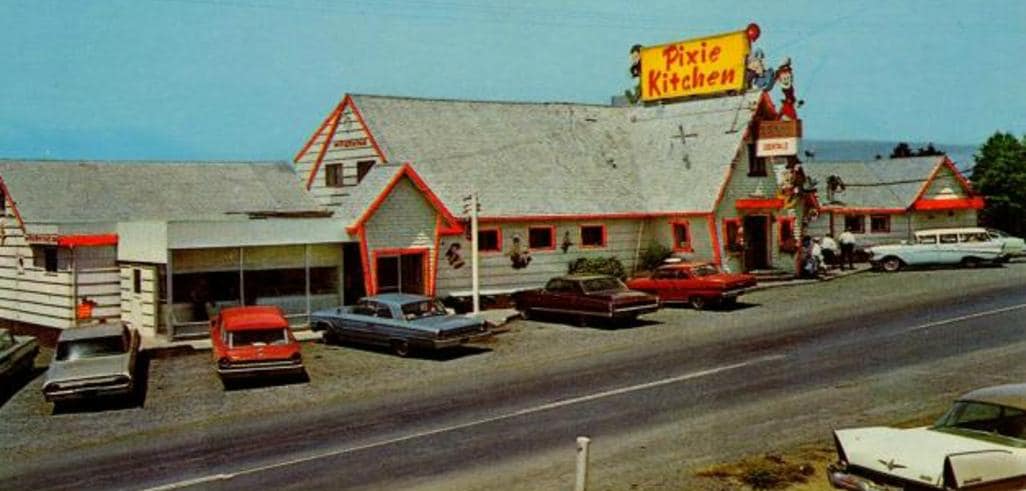
Pixie exhibit
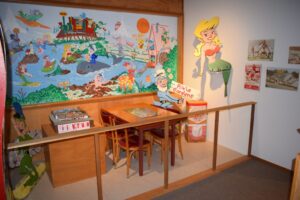
While it’s true everyone has a favorite exhibit, the one that often evokes the most emotion is the space dedicated to Pixieland and Pixie Kitchen. The Pixie Kitchen was a family restaurant that opened in 1953 and closed in 1985. From the popular restaurant grew Pixieland, an amusement park that opened north of Lincoln City in 1969 but was short-lived, lasting only about five years.
Initially, the exhibit came together in a piecemeal sort of fashion.
“They had a table from the original restaurant,” Hall recalled. “It’s what people remembered when they came into the museum. The pioneer era is pretty distant for most people, but they remember Pixieland and Pixie Kitchen.”
By 2004, the collection grew large enough to warrant its own exhibit space as people saw the small collection and returned to donate items from their own garages. The 50 or so items in the Pixie exhibit include menus, aprons, coffee pots, dinnerware, and placemats, plus a scale-model of the Pixie Kitchen and home movies of the park and restaurant.
“You would not believe how fond people were of this place,” said Syrop. “They have tears in their eyes when they come see the exhibit.”
- This story was originally published by our news partner Oregon ArtsWatch. It is supported in part by a grant from the Oregon Cultural Trust, investing in Oregon’s arts, humanities and heritage, and the Lincoln County Cultural Coalition.



